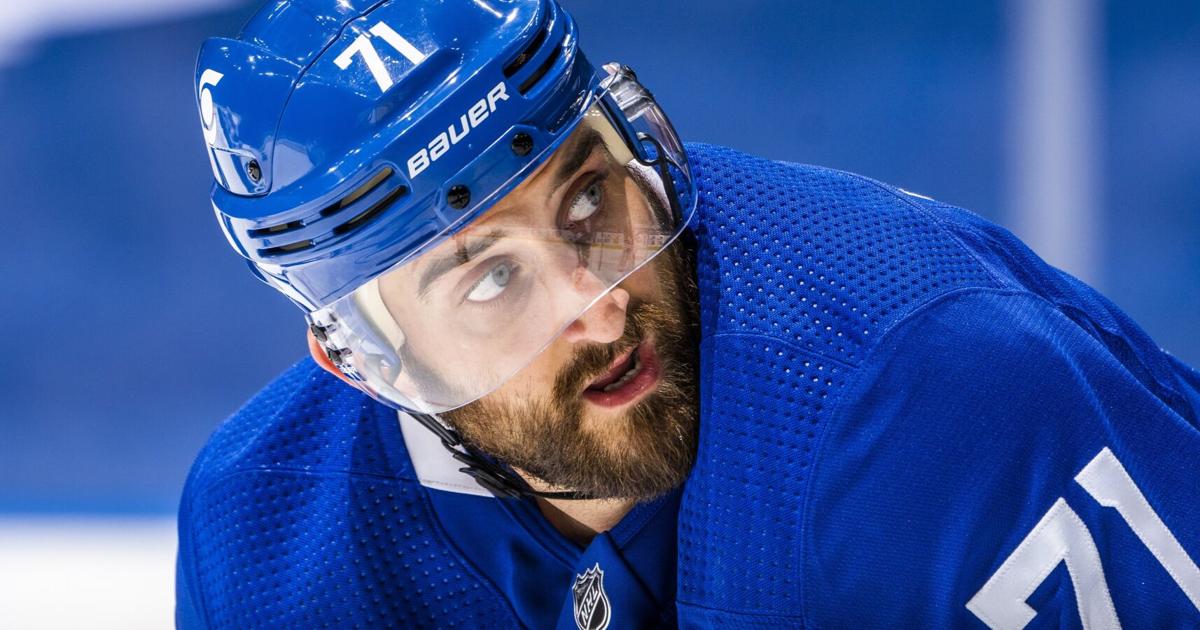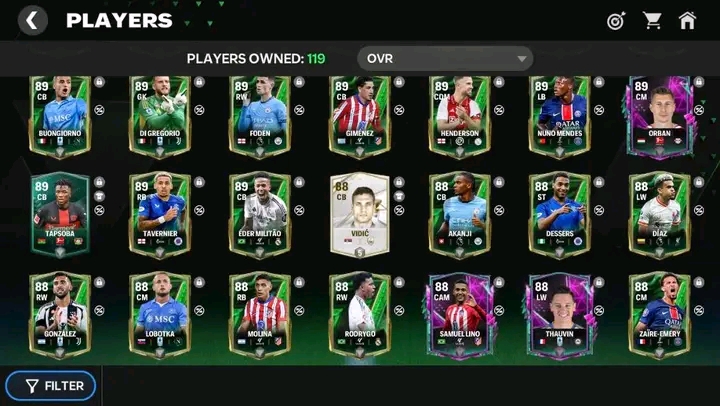It sounds like the Toronto Maple Leafs have been busy this offseason with their roster adjustments! Re-signing Connor Dewar and making a move to replace Wes Clark indicates they’re still focused on fine-tuning their lineup. Even if it seems like they’ve been quiet lately, it might just be a strategic pause before the next wave of moves or a focus on internal development and chemistry.
How do you feel about the changes they’ve made so far? Are there any specific areas you think they should address before the season starts?
Absolutely, there’s often more to address in the off-season, especially for a team like the Maple Leafs with high expectations. Here are a few key areas they might focus on before the summer wraps up:
1. **Cap Space Management:** Ensuring they stay under the salary cap while maximizing their roster’s potential. This could involve some creative moves or trades.

2. **Depth and Balance:** Building up the depth on their roster, especially in the bottom-six forward spots and defensive pairings. They might look for affordable free agents or trade options to bolster these areas.
3. **Goaltending:** Assessing their goaltending situation and making sure they have a reliable backup or even considering a potential upgrade if needed.
4. **Contract Extensions:** Negotiating or planning for contract extensions for key players, especially if they have expiring deals coming up.
5. **Youth Development:** Integrating younger players into the lineup or ensuring they have a strong development plan in place for their prospects.
6. **Team Chemistry:** Fostering good chemistry within the team, which includes both on-ice and off-ice dynamics. Preseason games and training camps are crucial for this.
Are there specific moves or adjustments you’re hoping they’ll make?
Re-signing Mitch Marner is definitely a top priority for the Toronto Maple Leafs. Given his impact on the team and the potential distraction of an unresolved contract, it’s crucial for the Leafs to get this done before the season starts.
Marner is one of the team’s core players and his absence or contract uncertainty could indeed become a major distraction. Securing his future would not only solidify the team’s offensive strength but also provide stability and focus as they head into the new season.
The Leafs will likely want to avoid the kind of prolonged negotiation that could hang over the team and potentially disrupt their preparation and chemistry. Do you have any thoughts on what kind of deal Marner might be looking for, or how it could impact the team’s cap situation?
You’re spot on—trading Mitch Marner would be a tough sell for the Leafs, and finding a fair deal that meets his value while keeping the team competitive is a complex balancing act.
**Marner’s Value:** Star players like Marner are incredibly valuable in the NHL. His ability to produce points, contribute in all situations, and perform in high-pressure moments makes him a cornerstone of the Leafs’ roster. Given his contributions, overpaying in terms of salary might be justified if it means keeping such a key player.
**Trade Considerations:** Trading Marner would be challenging because:
– **Market Value:** Teams would likely demand a substantial return, but finding a trade that truly benefits the Leafs while replacing Marner’s production and impact is tough.
– **Team Chemistry:** Losing a player like Marner could disrupt team dynamics and chemistry, which are crucial for success.
**Cap Management:** The Leafs will need to carefully manage their salary cap to accommodate Marner’s new contract. This might involve moving other contracts or finding creative ways to stay under the cap while maintaining a competitive roster.
**Negotiation Strategy:** The Leafs and Marner’s camp will likely be negotiating with an eye on balancing fair compensation for Marner with the team’s financial constraints. A long-term deal that aligns with the team’s window of contention could be ideal.
Ultimately, keeping Marner on the team seems like the most straightforward path to maintaining their competitive edge. It ensures they retain a player who’s crucial to their success, rather than trying to replace him and adjust the team accordingly.
That’s a great point. Brad Treliving’s track record with impactful trades, like those involving Jack Eichel and Matt Tkachuk, certainly highlights his ability to make moves that significantly alter team fortunes. Given this, it makes sense that he would be inclined to keep key players like Mitch Marner rather than moving them.
**Key Takeaways:**
1. **Proven Impact:** Both Eichel and Tkachuk made substantial contributions to their new teams, demonstrating how high-impact trades can be transformative. Treliving’s experience with such deals shows he understands the importance of keeping core players and building around them.
2. **Strategic Moves:** Treliving’s history suggests he’s not someone likely to make a high-profile trade involving a star player like Marner without a clear and compelling reason. His focus would likely be on maximizing the team’s current assets and making moves that strengthen the team without disrupting core pieces.
3. **Team Stability:** Keeping Marner aligns with maintaining team stability and continuity, crucial factors for a team looking to contend. Moving a player of Marner’s caliber would not only risk a significant on-ice impact but could also affect team morale and chemistry.
Treliving’s approach would likely prioritize negotiating a fair deal to keep Marner while making strategic adjustments to ensure the team remains competitive. This strategy aligns with his proven ability to make impactful decisions that contribute to team success.
Addressing the Nick Robertson situation is indeed crucial for the Leafs. If Robertson can step up and contribute significantly, he could help fill the void left by Tyler Bertuzzi’s departure. Here’s a breakdown of how the Robertson situation impacts the Leafs:
### **Nick Robertson’s Role:**
1. **Potential Impact:** Robertson has shown flashes of high skill and potential, and if he can stay healthy and develop further, he could become a key contributor. His increased role could help offset Bertuzzi’s departure by providing additional scoring and offensive depth.
2. **Development and Integration:** The Leafs need to ensure Robertson is integrated effectively into their lineup. This involves not just giving him ice time but also setting him up to succeed with the right line combinations and opportunities.
3. **Health and Consistency:** Robertson’s health has been a concern in the past. If he can stay injury-free, his ability to produce at a high level could make a significant difference.
### **Comparing Moves:**
– **Bertuzzi vs. Tanev:** Tyler Bertuzzi was a strong, physical forward with offensive skills, while Chris Tanev is a reliable defenseman known for his defensive play and stability. Replacing Bertuzzi with Tanev alters the team’s balance and focus. If Robertson can deliver, his performance could make up for the offensive loss while Tanev shores up the defensive side.
– **Other Moves:** With other changes being more about replacements or depth additions, Robertson’s development becomes even more critical. The Leafs need him to step up and show he can be a difference-maker to justify the overall changes made during the off-season.
### **Strategic Focus:**
1. **On-ice Chemistry:** Ensuring that Robertson meshes well with his linemates and that the coaching staff creates opportunities for him to thrive will be important.
2. **Evaluation and Adjustment:** The Leafs will need to continuously evaluate Robertson’s performance and be prepared to make adjustments if he’s not meeting expectations.
3. **Long-term Planning:** If Robertson can’t fully replace Bertuzzi’s impact, the Leafs might need to explore additional moves or internal adjustments to balance the roster.
Overall, resolving the Nick Robertson situation is essential for the Leafs to maximize their off-season moves and ensure they’re as competitive as possible.
You’ve highlighted some crucial points about the Toronto Maple Leafs’ roster and their readiness for the upcoming season. Here’s a breakdown of each of the issues you’ve mentioned and potential solutions:
### **1. Deadweight on the Roster:**
**David Kämpf, Ryan Reaves, Calle Järnkrok:**
– **David Kämpf:** Known for his defensive play and faceoff abilities, Kämpf might be seen as redundant if the Leafs are looking to improve their offensive depth or cap space.
– **Ryan Reaves:** Adds grit and physicality but might not be providing enough value relative to his contract if the team needs more offensive production.
– **Calle Järnkrok:** Versatile but may not fit into the top six or contribute enough to justify his spot if the team needs to free up cap space or roster spots.
**Potential Solutions:**
– **Trades:** Moving these players could free up cap space and roster spots. Look for teams in need of depth players or those with salary cap issues who might be willing to take on these contracts.
– **Buyouts/Send Down:** If trades aren’t possible, exploring buyouts or waiving them for assignment to the AHL could be alternatives.
### **2. Third-Line Centre:**
**Current Options and Concerns:**
– **Pontus Holmberg:** While he’s shown promise, he might not be ready to handle a full-time third-line centre role, especially if the team has high expectations.
**Potential Solutions:**
– **Trade for a Centre:** Acquiring a proven third-line centre through trade could stabilize the lineup and provide more depth. Look for teams that are rebuilding or have surplus centres.
– **Move Marner or Nylander to Centre:** This could be a viable option if a trade isn’t feasible. Marner has shown he can play centre, and moving him there could allow John Tavares to slide into the third-line centre role, providing strong depth.
– **Internal Development:** If the team is committed to developing younger players, giving Holmberg or another prospect a chance could be an option, though this carries more risk.
### **3. Roster Readiness for October:**
**Current Status:**
– **Roster Balance:** If the current roster doesn’t seem ready, it’s crucial for the Leafs to address these gaps before the season starts. They’ll need to be proactive in making trades, managing cap space, and ensuring that their lineup is balanced.
**Action Steps:**
– **Evaluate Roster:** Continually assess the team’s performance during preseason games and make adjustments as needed.
– **Cap Management:** Ensure the team is operating within the salary cap while still being able to compete effectively.
– **Chemistry Building:** Use training camp and preseason to build chemistry among the players, especially if there are new additions or positional changes.
Overall, addressing these issues is key to getting the team in shape for a competitive season. Whether through trades, adjustments in player roles, or internal development, the Leafs need to ensure they’re maximizing their roster potential and addressing any weaknesses before October.



